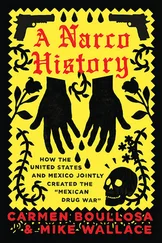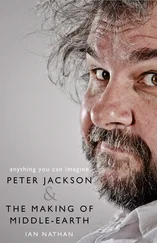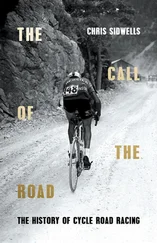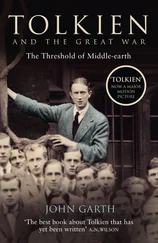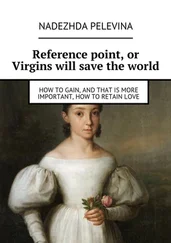For one thing, people did not know where to place them between the polarities of good and evil. They were the descendants of Cain, the primal murderer, said the Beowulf -poet . They weren’t as bad as that , imply the characters in Sir Gawain – actually the green giant plays fair and even lets Sir Gawain off – but they were certainly very frightening. It was wrong to offer sacrifice to them ( álfa-blót ) concurred all post-Christian Icelanders. On the other hand it might have seemed a good idea to propitiate them; if you didn’t, Anglo-Saxons perhaps reminded each other, you might get wæterælfádl , the ‘water-elf disease’, maybe dropsy, or ælfsogoða , lunacy. There was a widespread belief in ‘elf-shot’, associated on the one hand with the flint arrows of prehistoric man and on the other with the metaphorical arrows of diabolic temptation. The consensus of these references is fear.
Simultaneous with that, though, is allure. Æ lfscýne is an approbatory Anglo-Saxon adjective for a woman, ‘elf-beautiful’. Fríð sem álfkona , said the Icelanders, ‘fair as an elf-woman’. The standing and much-repeated story about the elves stresses their mesmeric charm. It may be ‘True Thomas’ on Huntly bank who sees ‘the queen of fair Elfland’, or a young woman who hears the elf-horn blowing, but either way the immediate reaction is of desire. True Thomas disregards all warnings to make off with the elf-queen, does not return to earth for seven years, and (in Walter Scott’s version) leaves immediately again as soon as he is called. The medieval romance of Sir Launfal ends with the same glad desertion. For women to run off with elves was regarded with more suspicion. ‘Lady Isabel’ in the Scottish ballad saves her maidenhood and her life from the treacherous elf-knight she herself has summoned, and at the start of The Wife of Bath’s Tale Chaucer makes a series of jokes about elves and friars, the burden of which is that the latter are sexually more rapacious than the former, though the former had a bad reputation with young women as well. The allure and the danger are mixed. Indeed a common variant of the ‘young man/elf-queen’ story ends with him in despair, not at having been seduced but at being deserted. It is the memory of former happiness, the ‘disillusionment’ of loss of ‘glamour’, which leaves Keats’s character ‘Alone and palely loitering’.
Now one can see very easily how such an apparent discrepancy of fear and attraction might in sober reality arise. Beauty is itself dangerous: this is what Sam Gamgee tries to explain to Faramir in The Two Towers, when interrogated on the nature of Galadriel, the elf-queen herself. ‘I don’t know about perilous ’ says Sam (pp. 664–5), replying to Faramir’s highly accurate remark that she must be ‘perilously fair’:
‘It strikes me that folk takes their peril with them into Lórien, and finds it there because they’ve brought it. But perhaps you could call her perilous, because she’s so strong in herself. You, you could dash yourself to pieces on her, like a ship on a rock; or drownd yourself, like a hobbit in a river. But neither rock nor river would be to blame.’
One could say the same of Sir Launfal’s lady, or True Thomas’s. One can also see how the rejected wives and fiancées, or husbands and fathers of people under elvish allure would concoct a very different story! Before long they would have the ylfe in exactly the same category as Cain – or Moloch. But this would be a second-hand opinion, and a prejudiced one (like those of Boromir, or Éomer and the Riders, LOTR p. 329 or p. 422).
It is in fact the strong point of Tolkien’s ‘re-creations’ that they take in all available evidence, trying to explain both good and bad sides of popular story; the sense of inquiry, prejudice, hearsay and conflicting opinion often gives the elves (and other races) depth. In Lothlórien we can see Tolkien exploiting, for instance, variant ideas about the elves and time. Most stories agreed that humans returning from Elf-land were temporally confused. Usually they thought time outside had speeded up: three nights in Elf-land might be three years outside, or a century. But sometimes they thought it had stood still. When the elf-maid sings in the Danish ballad of ‘Elverhøj’, or ‘Elf-hill’, time stops:
Striden strom den stiltes derved,
som førre var van at rinde;
de liden smaafiske, i floden svam,
de legte med deres finne.
‘The swift stream then stood still, that before had been running; the little fish that swam in it played their fins in time.’ 3
Did the discrepancy disprove the stories? Tolkien thought it pointed rather to what C. S. Lewis called the ‘unexpectedness’ of reality, 4 and paused to explain the phenomenon in The Fellowship of the Ring , p. 379. There Sam thinks that their stay in Lothlórien, the ‘elf-hill’ itself, might have been three nights, but ‘never a whole month. Anyone would think that time did not count in there!’ Frodo agrees, but Legolas says that from an elvish viewpoint things are more complicated than that:
‘For the Elves the world moves, and it moves both very swift and very slow. Swift, because they themselves change little, and all else fleets by: it is a grief to them. Slow, because they do not count the running years, not for themselves. The passing seasons are but ripples ever repeated in the long long stream.’
His remarks harmonise the motifs of ‘The Night that Lasted a Year’ and ‘The Stream that Stood Still’. They are in a way redundant to the mere action, the plot of The Lord of the Rings. Yet they, and many other incidental turns, explanations, allusions, * help to keep up a sense of mixed strangeness and familiarity, of reason operating round a mysterious centre. This feeling Tolkien himself acquired from long pondering on literary and philological cruxes; it explains why he laid such stress on ‘consistency’ and ‘tone’.
To cut matters short, one can remark that Tolkien went through much the same process with the ‘dwarves’. This is also an old word, cf. Old English dweorh , Old Norse dvergr , Old High German twerg , Gothic *dvairgs etc. It seems to have cohabited with the word for ‘elf’ over long periods, causing a sequence of confusions over ‘light-elves’ ( = elves), ‘black-elves’ ( = ? dwarves), and ‘dark-elves’ ( = ?), which Tolkien never forgot and eventually brought to prominence in the story of Eöl in The Silmarillion. More interesting is some slight sense in various sources that men dealt with dwarves in a way they could not with elves, on an equal basis marred often by hostility. The seven dwarves help Snow-White in the familiar fairy-tale (from the Grimms’ collection), but in ‘Snow-White and Rose-Red’ (also from Grimm) the dwarf combines great wealth with sullen ingratitude. The association with gold and mining is strong, as in the site of ‘Dwarf’s Hill’; so are the stories of broken bargains, as when the Norse god Loki refuses to pay a dwarf the head he has lost, with Portia-like quibbles, or when Loki again strips the dwarf Andvari of all his wealth, even the last little (fatal) ring that Andvari pleads for. 5 Inter uos nemo loquitur, nisi corde doloso , says the dwarf in the eleventh-century German poem Ruodlieb , with hostile truth: ‘among you (men) no one speaks except with a deceitful heart. That is why you will never come to long life …’ Both the longevity of dwarves and their tendency to get into disputes over payment are remembered on several occasions in The Hobbit. Their ‘under-the-mountain’ setting there is traditional too. The great Old Norse poem on world’s end, the Völuspá , links them with stone: stynia dvergar fyr steindurom , ‘the dwarves groan before their stone-doors’. Snorri Sturluson (a kind of Northern Lazamon) says that they ‘quickened in the earth … like maggots’, while his Icelandic countrymen long called echoes dvergmál , ‘dwarf-talk’. The correspondence between such separated works as Snorri’s Prose Edda (thirteenth-century Icelandic) and the Grimms’ Kindermärchen (nineteenth-century German) is indeed in this matter surprisingly, even provocatively strong, and Tolkien was not the first to see it; the Grimms themselves observed that such things were a proof of some ‘original unity’, des ursprünglichen Zusammenhangs. 6 Zusammenhang: a ‘hanging together’. That is very much what Tolkien thought of all these tales, and the phenomenon remains no matter what interpretation one puts on it.
Читать дальше

